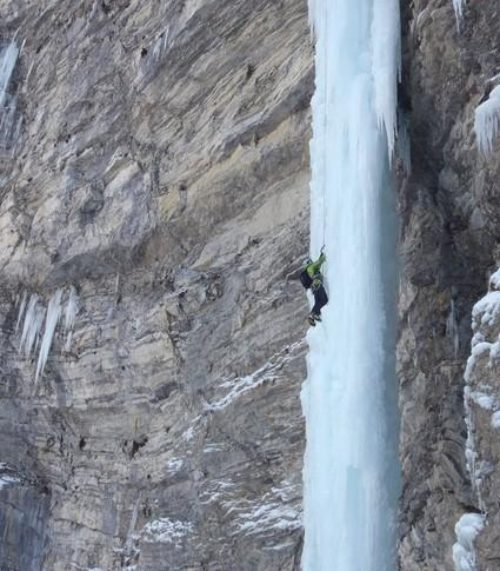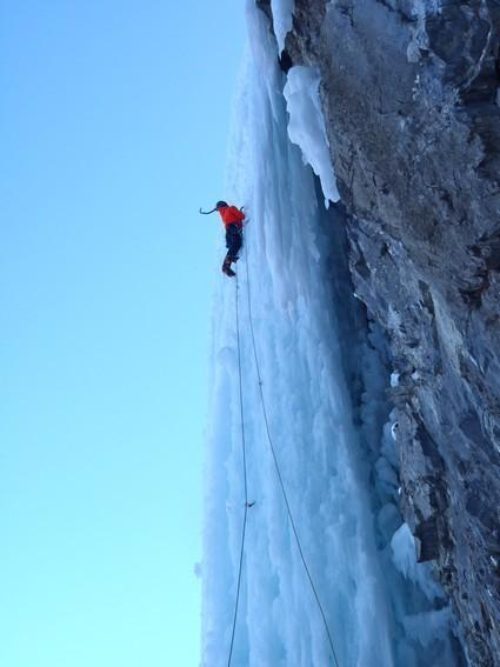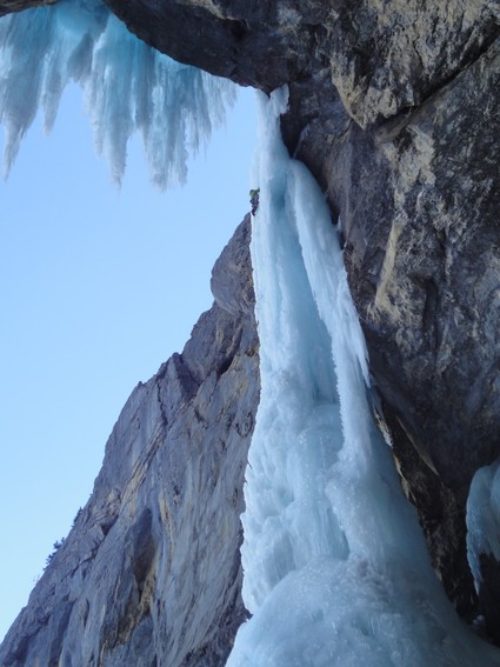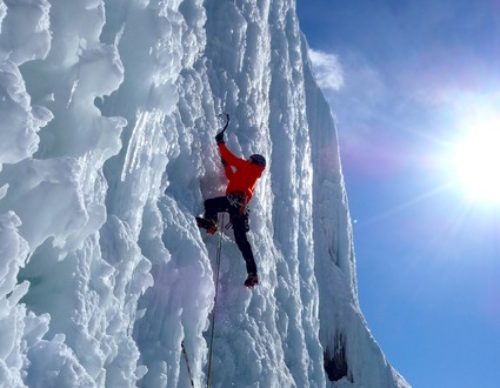Ice Article - Professional Mountaineer Magazine
Safe Icefall climbing this winter. So what’s going on with the ice? How cold/warm has it been, and for how long?
You’ve arrived during a very cold period and everything looks ‘in’.
But actually, you’ve arrived at the end of a very warm period and this cold snap has just been for the last day or two. Be very careful on steep ice as it will be brittle, fracture easily when placing picks and screws and be without much internal strength and structure and could fall down!
You arrive in a period of very warm weather and everything looks ‘in’.
But actually it’s not the start of a warm period which can relax the ice and make for some very safe steep climbing, but a couple of weeks into a very warm period. Easier angled ice that relies less on its structure is a safe bet. Steeper ice and pillars saturated in water and looking very blue will have no structure and will be very heavy. Water running down the back of the formation will delaminate the ice putting more weight into the structure. These could tumble down!
You arrive in a period of very cold temperatures and everything looks ‘in’.
You can feel the cold coming off the ice. The ice will be under enormous tension, pick and ice screw placements will crack and split the ice as it tries to release its tension. The ice during this time will contract and delaminate from the wall that it was originally bonded to becoming less stable. Stay off the steep icefalls as they may fall down and climb the easier angled flows under less tension.
You arrive and it’s very warm in the day and very cold at night (dropping to -15 to -20 degrees).
Steep icefalls and pillars are destabilised during these periods of big temperature swings and may collapse! Choose easier angled icefalls under less tension or perhaps wait until later in the day when the ice has warmed up and relaxed again.
The temperature is the biggest factor in the creation of ice but also the biggest factor in climbing the ice safely.
In Summary
Climb lower in very cold periods or higher when it’s warm.
During big temperature swings, climb later in the day or climb higher on north facing ice which will be less affected.
Avoid super steep ice when you think that it may be under too much tension.
Start with a ‘blank sheet’ each day, just because it was climbed the day before doesn’t mean that it’s safe today. Look at the past weather, the forecast, ask others to help you get a feeling for what’s ‘in’
It can sometimes be harder to turn back at the base of an icefall than it is to climb it. But, don’t feel pushed into anything. Make the right decision.
Just remember, the ice conditions and weather don’t care who you are or whether you’ve spent all your savings to get there. It is important to be with the right climbing partner and be patient, don’t let enthusiasm take over and blinker any judgement even if you’re flying home the following day.
The routes will still be there another day and the trick is for you to be there too!
Stay safe
Adrian Nelhams
Director ISM




Related News Articles

ISM Virgin Peaks Expedition 2024 - Tien Shan Kyrgyzstan
ISM trip report of our trip into a very remote part of the Tien Shan Mountains, Kyrgyzstan
Read Article
Getting Into & Developing Your Climbing
Indoor bouldering is a great place to start if you want to try climbing for the first time. You can…
Read Article
ISM Virgin Peaks Expedition 2023 – Tien Shan Kyrgyzstan
ISM trip report of our trip into a very remote part of the Tien Shan Mountains, Kyrgyzstan.
Read Article
Kyrgyzstan Faces 2022
This year ISM celebrated 25yrs of expedition climbing in Kyrgyzstan, with a fantastic trip to the Fergana Range in the…
Read Article



